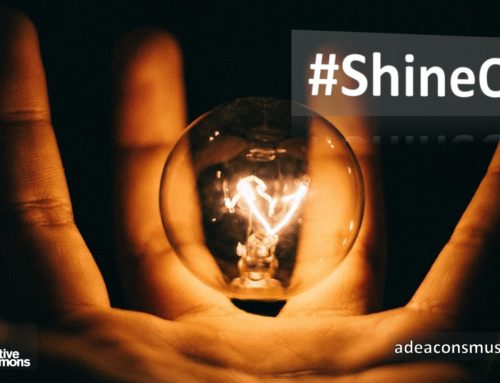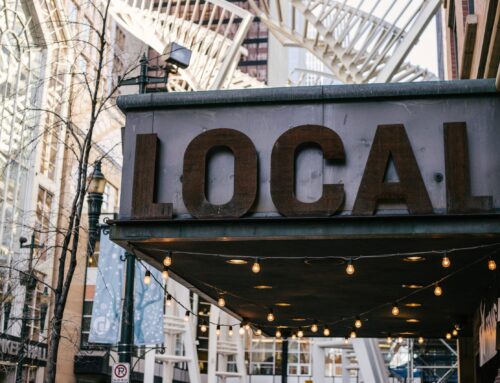In May of this year, I had the honour to be a panellist for the opening and closing sessions of the first Contemplative Arts Festival in Saskatoon. Organisers of the festival described the festival’s intention in this way: “The contemplative arts invite us to open body, mind, and spirit to a centering experience through creative expression.”
The first panel I was involved in was entitled “Healing a Sick World: What’s Art Got to Do With It?” and the panellists were asked to reflect upon this question: “In the face of climate change and political upheaval, can art and contemplative living help us turn the tide?” The final panel was entitled “Building Contemplative Space: That’s So Yesterday” and invited panellists to muse about the following: “Why do we build contemplative spaces such as synagogues, mosques, and churches? Are they still necessary, or a waste of valuable resources that might be better spent on centres for the under-privileged, or community hubs for neighbourhoods that need them?”
This was a rich experience filled with generative and creative conversations, which continues to lead me into new musings. I have been deeply affected by this weekend of conversation and appreciated being in the presence of those who birth creations. In such company, I have found myself influenced by their intention to do justice, heal the earth, and affect change in light of our species dis-ease with the Creation that we are intended to steward, not pillage. It would be easy to be discouraged, but in the midst of such beauty – from the tactile, to the visual, the auditory, and the kinetic – I left inspired by the resilience that blooms when souls are in tune with the lived experience.
I left the event emboldened, but challenged. In fact, I have been thinking about art’s role as freeing and oppressive. Are the creations that inspire us meant to be liberating or propagandistic? Is this either/or division a distraction? What is the difference between the artist’s intention and the experience we might have of their art?
These are not easy questions because art, regardless of the intention of the creator, often affects us in ways that cannot be anticipated. The creation, itself, whether image or word, lyric or sculpted, is always moving and relational. Artistic creations invite experience beyond words, when words are inadequate. Artistic creations invite experience that requires words, when melody or image is inadequate.
When we attach intention to art, think World War II and the messages sent by Nazi Germany or our Canadian context during the same time as the federal government endeavoured to limit the immigration of those deemed ‘not pure.’ These examples illustrate how art can be used as propaganda. It can be weaponised. This is not an intellectual exercise and that, in itself, should be a warning.
As a person who aspires to discipleship, I believe that Jesus’ ministry allows us to ask who benefits and who suffers. I think that same, perhaps rudimentary, lens can be applied to the art to which we are exposed, whether catchy slogans, awe-filled canvases, or music that makes us soar: who is the audience? What is the takeaway? What is the message the artistic form conveys and what words does it not need to use to affect the participant?
Art is relational – it affects us, and, from the vantage of contemplation, it often leaves us curious and wondering. If it does not invite us into reflection and action, analysis and inquiry, then (perhaps) the reality of propaganda becomes worth consideration. What role does our social location have when we interact with art? What if the intention to elicit reflection is not our experience? Does that mean it is propaganda?
In this digital day and age when art is everywhere, it is easy to be lulled and overloaded when information is ubiquitous. In the torrent, art, too, can be lost. Jesus’ mandate for us to listen, see, act, and do critically remains as important now as at the beginning of his ministry. In our time and place, I suggest we need to aspire to that mandate when we consume information and engage with art.
Why? The coins themselves that were used to barter and trade, sell lives, and Jesus himself, were imprinted with the artistic image of Caesar. Art is everywhere, but if we do not engage it, it is just possible it is shaping us in ways we are not aware. And that, friends, is the place where I pause in this musing …








You have given me lots to think about. We Canadians like to think we are so pure, that we would never hate or discriminate against others who get trapped in hate and forced or coerced into condemning others like people did during WWII or many people are again doing today. Popular media is persuasive. At it’s best Art should inspire us to love one another and bring out the pain, the sorrow and the joy and laughter of living together.
Here’s a 13 minute video that was awarded “Best Canadian Short” at the NorthwestFest Documentary Festival held in Edmonton in May 2019. It is a social/spiritual commentary about “Fake News.” It is funny. So does that make it a parody? The name of the Film is “The Day DON died.”
https://youtu.be/0qQkb05wVdw
Hi Linda,
Always a gift to hear your voice as life and time permit. Thank you! I appreciate the aspiration to love as a criteria for the conversation: very helpful! I look forward to exploring the documentary too! Though such conversations may seem disconnected (for some) to discussions about the social good and public commons, this feels like one of those underlying ones that must be explored, if we are to navigate well the current political realities: does that make sense?
Yes that does make sense Richard. People are people. Many people get focused on what is the social good for the public commons. They forget that people are diverse living, breathing creations who are in the process of creating themselves in relationship to the public commons. Odd as this may seem, some people simply cannot do this in public. Like plants and other organisms that help this planet grow and continue to flourish, some people thrive in the shade and some prefer to live and thrive underground. Does that make sense?
Hi Linda – yes that does make sense. In fact, in a parallel conversation in the A Deacon’s Musing Facebook page (https://www.facebook.com/adeaconsmusing/), I just shared that sometimes the viewer experiences the creation in a way that was never intended by the creator. Sometimes that occurs in public or often not, especially as an internal experience. What that means then carries import of the choices we make and where find ourselves in regard to recognising what we have seen/experienced. Not sure if I have gone off on a tangent from your remark – but feels connected to me 🙂